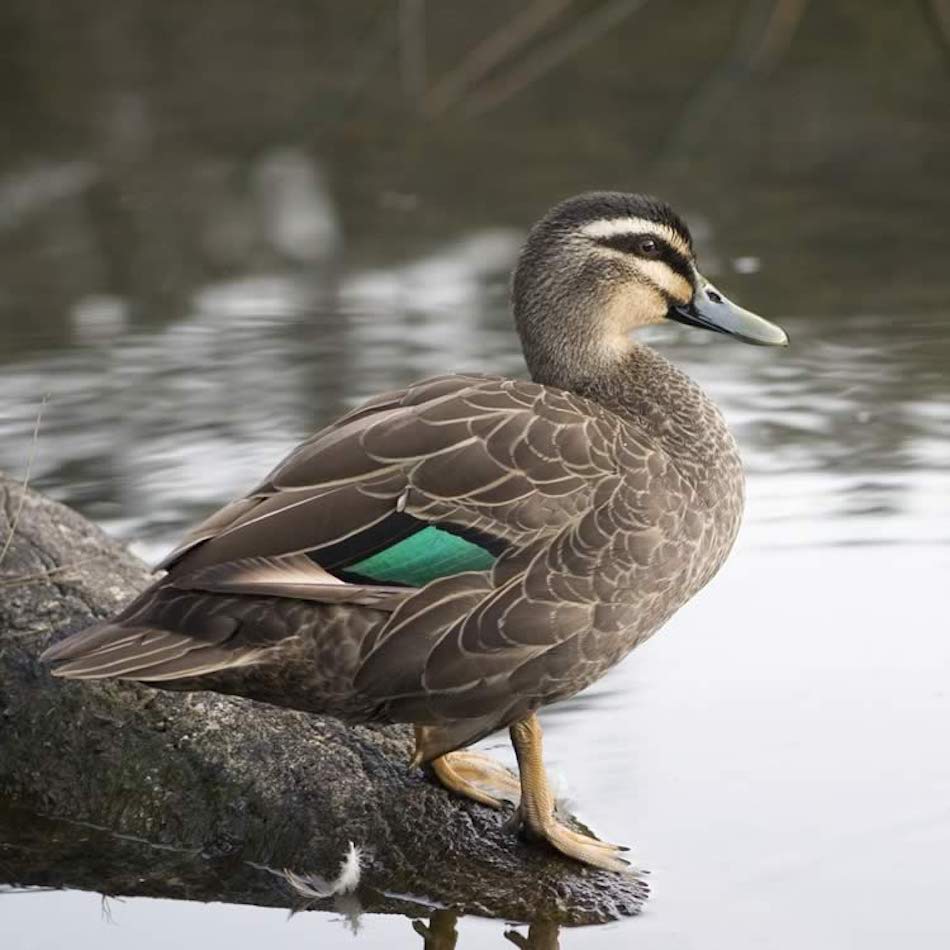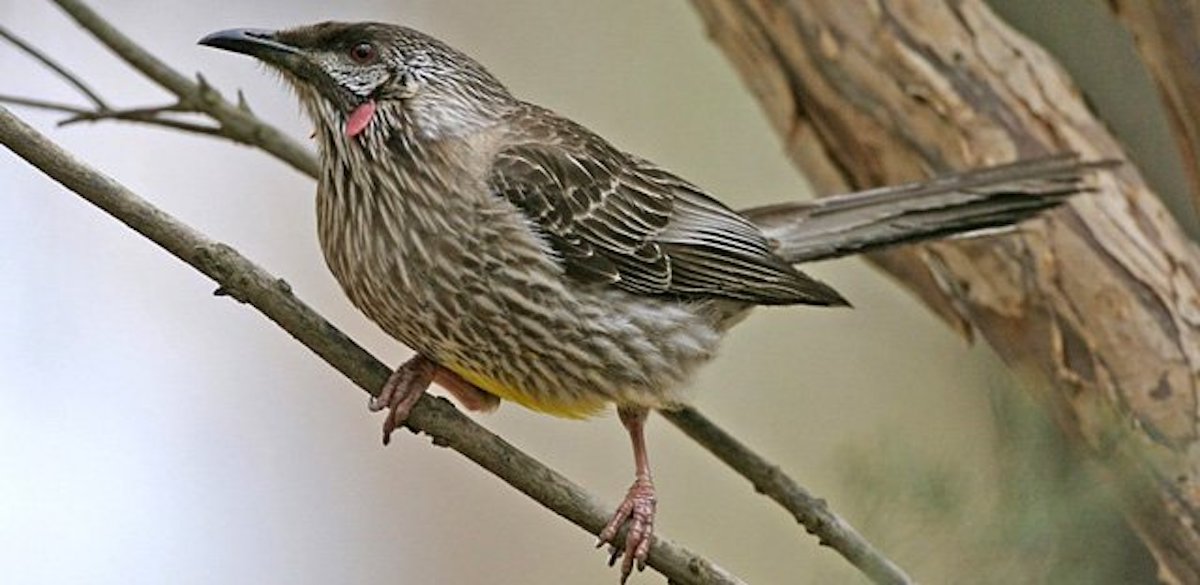
With a lake and large nature reserves, there’s plenty of bird life at Lake Treeby. Relax on the grass or in one of our seats and see what you can spot!
Black Swan – Cygnus atratus

The black swan is the Western Australian bird emblem, and has a fascinating history.
Swans around the rest of the world are white, so nobody other than Australian Aboriginals knew black swans existed. Over 2000 years ago, Roman satyrical poet Juvenal referred to a good wife as a “rare bird in the earth, and very like a black swan”. Like pigs flying, the black swan was a figure of speech for something that was absurd or impossible.
However, Dutch navigator Willem de Vlamingh reported finding black swans in Western Australia in 1697, showing how risky it is to declare something impossible. Philosophers, such as Karl Popper, used the ‘black swan fallacy’ to show that scientific ideas can never be proven true, only falsified, whilst John Stuart Mill used the statement ‘all swans are white’ to show how large numbers of consistent observations could encourage an incorrect deduction.
Meanwhile, the Aboriginal people had many stories about how the black swan became black.
- In the Noongar story Maali, the swan, is proud and boastful of its beauty, and has its white feathers ripped out by Waalitj, the eagle, as punishment.
- In the Yuin story the swan, Guunyu, humble and quiet, is attacked because the other birds are jealous of his beauty.
- In the Euahlayi story, two brothers are transformed into swans, or Buahmul, as part of a robbery. Later they are attacked by eagles as an act of revenge.
In each story, after the swans have their white plumage torn out, crows release a cascade of feathers, turning the swans black, except for their white wing tips. Their red beak still shows blood from the attack.(source: The Conversation).
Black Swans are nomadic and move between wetlands at night. They mainly eat water plants.
Black Swans mate for life and reunite every year to breed. Both parents take care of raising the cygnets, which stay with their parents for some time (source: Perth Zoo)
Pacific Black Duck – Anas superciliosa

The Pacific Black Duck are also dabbling ducks and they are considered one of the most versatile of the Australian ducks. They can be seen in all types of water and all regions of Australia, though they prefer arid regions.
These species use an oil produced from a gland at the base of their tail to become waterproof, which helps them at the time of looking for food.
Their diet consists mainly of seeds of aquatic plants, though they complement it with molluscs, crayfish, aquatic insects and larvae. Their weight is usually between 1 to 1.4 kg, with a body length of 50 to 60 cm.
Carnaby’s Cockatoo

Carnaby’s Black-Cockatoo can be found in the south-west of Western Australia. It is a large, black cockatoo with white tail feathers. It is one of Australia’s five black cockatoo species, three of which are in Western Australia. It has a distinctive ‘wy-lah’ call which you can listen to here..
They are very social birds and can be seen and heard flying in pairs or in flocks. in the past, their flocks were so large that that they are said to have blackened the sky like rain clouds. Unfortunately, this bird is listed as endangered and numbers have halved in the last 200 years
The Carnaby’s Cockatoo has a large bill and is mainly a grey-black colour, with narrow off-white fringes to the feathers. Males have dark grey beaks and pink eye-rings, while females have light grey beaks, light-grey eye-rings and paler greyish legs than the males. When they find a mate, Carnaby’s stay together for life.
Established trees and areas of woodland are extremely important to Carnaby’s as they spend most of their time feeding and roosting (sleeping) in the canopy and also using tree hollows to build a nest for their young. They only come to the ground to drink or occasionally to forage for seed when food becomes scarce. They inhabit native woodlands dominated by eucalypts, as well as nearby heathlands and banksia woodlands. The Black Cockatoo needs remnants of native vegetation within 12 kilometres of their nesting sites to raise healthy young,. Hence, the retained nature reserves of Lake Treeby should help to retain the presence of these birds in our local area.
They like to eat the seeds of Banksia, Hakea, Eucalyptus and Grevillea plants which they get to with their very powerful beak. They also eat pinecones, nectar from flowers and insect larvae.
Female cockatoos can lay up to two eggs but normally only have one egg. Babies are born with white plumage that slowly darkens as they mature (get older) until they reach full adulthood roughly 70 days after hatching.
Carnaby’s cockatoos travel very large distances to find food and trees for nesting. They migrate back and forth from the Swan Coastal Plain where they feed during the summer in their favoured Banksia and Tuart woodlands.
In the winter months they fly to the Wheatbelt to breed returning to the same breeding site each year to nest in hollows in old eucalyptus trees.
Their average size is 55cm and they can live for 25-50 years.
White Ibis – Threskiornis molucca

The Australian white ibis is a wading bird of the ibis family, and it is widespread across Australia. They can be found almost everywhere, except for dry habitats. Their preferred habitats are swamps, lagoons, grasslands, but they also inhabit urban parks and gardens.
This bird is known for its long down curved black beak, which is used to dig for crayfish and mussels. It also uses its beak to open mussels by hammering them on a hard surface.
Their size ranges from 69 to 76 cm.
Pink & Grey Galah – Eolophus roseicapilla

Galahs are the pink and grey cockatoos that are so familiar to many Australians. The galahs feed off seeds found on the ground. Sometimes this includes seeds of grasses and cultivated crops, which is why farmers may consider them an agricultural pest, despite being a native Australian bird.
These cockatoo species have a bouncing acrobatic flight, but they spend much of the day sheltering from the heat in trees and shrubs. Then, they gather with the other birds later at night.
Both male and female look the same, and the only way to distinguish them is the colour of their eyes. Males have brown eyes, while the females have red eyes.
Wattlebird – Anthochaera

These species include the Little Wattlebird, Red Wattlebird, Western Wattlebird, Yellow Wattlebird, and the Regent Honeyeater. However, only the Red and Yellow Wattlebird have wattles. A wattle is a fleshy caruncle hanging from various parts of the head or neck.
The Red Wattlebird is the second largest honeyeater in Australia, and the largest in Perth. It can be loud and energetic as it protects food bearing plants from other honeyeaters. It is very protective of its nest in the breeding season and will often chase away birds much bigger than itself.
Its nest is cup shaped and built high in the fork of a tree. Built with bark and leaves it is then lined with fur and other soft material. Both parents share the incubation and feeding.
New Holland Honeyeater – Phylidonyris novaehollandiae

This small honeyeater is an active bird, and rarely sits still long. They are common in heath, forests, woodland, and gardens, often where grevilleas and banksias are found. The nature reserves surrounding Lake Treeby are an ideal habitat. Here they obtain carbohydrates from the nectar of flowers including Banksia, Hakea, Xanthorrhoea, and Acacia. However, they also eat invertebrates like spiders and insects for protein.
Females are slightly smaller in size but similar in looks to the males. Young birds are browner and have a grey eye.
If danger approaches, a group of honeyeaters will join together and give a loud alarm call.
Magpie – Gymnorhina tibicen

Magpies are one of Australia’s most highly-regarded songbirds. They have a large variety of calls, and their pitch can vary up to four octaves.
In indigenous Australian stories, these birds are credited with creating the very first sunrise. Their singing each morning greets the Sun-Woman. You can read the Aboriginal dreamtime story here.
Magpies are very territorial, especially at breeding time between July and November. The males can swoop people or dogs to protect their eggs and chicks, warning them to move away from their territory.
Rainbow Lorikeet – Trichoglossus moluccanus

This bright and colourful medium-sized parrot inhabits the rainforest, coastal bush, and woodland areas. They can be as long as 25 to 35 cm. Their diet typically mirrors its fruity colours: think bright flowers such as grevilleas, banksias and eucalyptus.
They travel together in pairs, though sometimes they fly as a flock, but disperse again into pairs. They are protective of their feeding and nesting, and may aggressively chase any birds seen as a potential threat, regardless of their size.
They are declared pests in the southern parts of Western Australia, including the Perth metropolitan area. Whilst they are native to other parts of Australia, they were introduced to Western Australia when several escaped as caged birds in the 1960s. If you have fruit trees, you’ll need to net them to stop these birds from eating your fruit..
More Creatures & Flowers
Check out more local flora and fauna in the links below:
